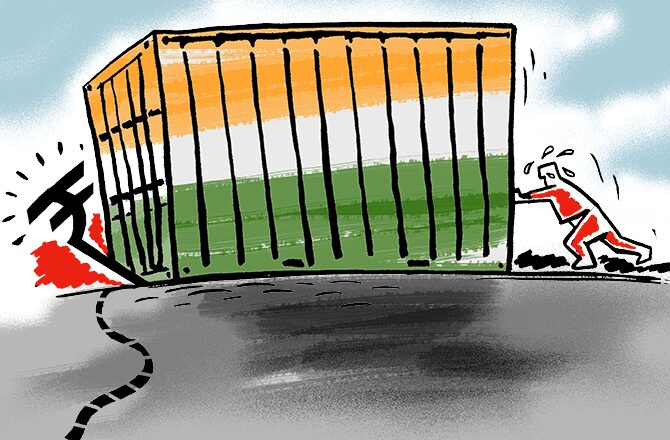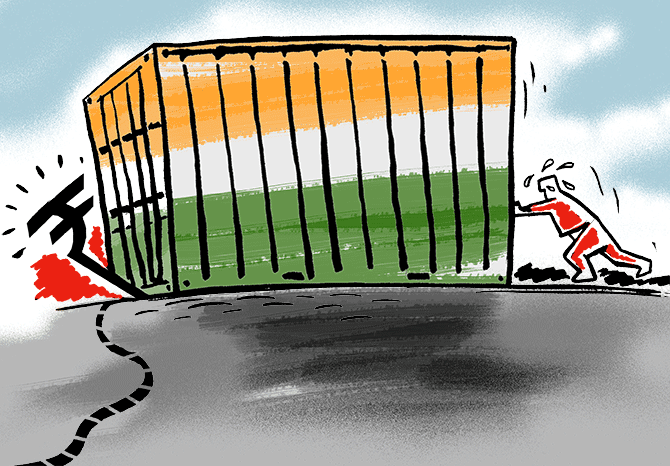India’s trade deficit with Russia grows seven-fold to $34.79 billion
The rising dependence on discounted crude oil has resulted in India’s trade deficit with Russia hitting the second-highest place last year, after China, reveals Department of Commerce data.
From April through January 2022-23 (FY23), India’s maximum trade deficit was with China, at $71.58 billion.
This was followed by Russia, where the deficit expanded sevenfold — from $4.86 billion in April-January of 2021-22 (FY22) to $34.79 billion during the same period in FY23.
Of the $37.27 billion imports from Russia, two-thirds of the value of goods imported from the country was of crude oil, shows data.
The ever-growing trade gap is mainly on account of a consistent rise in imports from Russia, soon after its stand-off with Ukraine started in February 2022.
While the Western nations have attempted to isolate Russia from global trade through economic sanctions, India continues to carefully balance its relations by not taking sides.
Subsequently, India also started buying discounted crude from Russia.
Conversely, exports initially nosedived in the first few months, but gradually the value of outbound shipments hit pre-conflict levels.
Oddly enough, Russia was not even among India’s top 20 trade partners.
In FY22, the country was India’s 25th largest trade partner. This was mainly because Russia was able to meet its demand for goods from Europe and China.
However, the situation changed dramatically after the US and the European Union slapped sanctions on it.
It is now the fifth-largest trading partner, mainly driven by a jump in imports.
Arun Garodia, chairman, Engineering Export Promotion Council of India, says as far as engineering goods are concerned, there’s above-average demand in Russia.
“Russian companies are approaching Indian manufacturers and suppliers to source their needs from India, instead of European or Chinese companies.
“Over time, the trade deficit will come down.
“For that, the government will have to issue a mandate that electronic bank realisation certificate (eBRC), required to complete export transactions, is issued by Indian banks,” he says.
Industry insiders observe that 50 per cent of Russia’s trade was with European nations.
Now that Russia doesn’t have access to Europe because of sanctions, it is eager to buy from India.
“This is India’s moment. If we make inroads now, perhaps Russia may continue to trade with us, even after Europe lifts sanctions,” they say.
To facilitate India’s trade with Russia and promote the growth of global trade, the Reserve Bank of India also spelt out a mechanism to settle international trade transactions in the Indian currency last year.
However, not much headway has been made as Indian banks continue to fear secondary sanctions.
External Affairs Minister S Jaishankar raised concern about the widening trade deficit with Russia, stating India would work with the sanctions-hit nation to address market access, non-tariff barriers, payments, as well as logistics-related issues.
“We have crossed the bilateral trade target of $30 billion before 2025, which was the target year given to us by our leadership.
“For the period April 2022-February 2023, I understand that trade is about $45 billion and the expectation is that this will continue to grow.
“There is also understandable concern about the trade imbalance these new volumes have created.
“We need to work together with our Russian friends on a very urgent basis on how best to address that imbalance,” he said.
Jaishankar had also said that a free trade agreement (FTA) with the Eurasian Economic Union — comprising five member states of Russia, Belarus, Kazakhstan, Kyrgyzstan, and Armenia — will certainly deepen the bilateral commercial relationship between India and Russia.
Experts, however, point out that the progress on the FTA with EAEU will be a political call, considering the ongoing conflict between Ukraine and Russia.
Ajay Sahai, director-general and chief executive officer, Federation of Indian Export Organisations, says that an FTA with Eurasia will be beneficial as these nation industries don’t compete with each other.
“It will also help India in getting raw material (crude) at reasonable prices and better market access for India’s critical exports,” he adds.
As of January 2022, both sides had finalised the terms of reference on the proposed trade pact, say government officials.
Both sides had decided to have initial discussions to set the agenda for the trade negotiations and finalise the structure of the joint text for the trade agreement in March 2020 in Moscow.
It eventually got deferred due to the Covid-19 pandemic.
Source: Read Full Article


